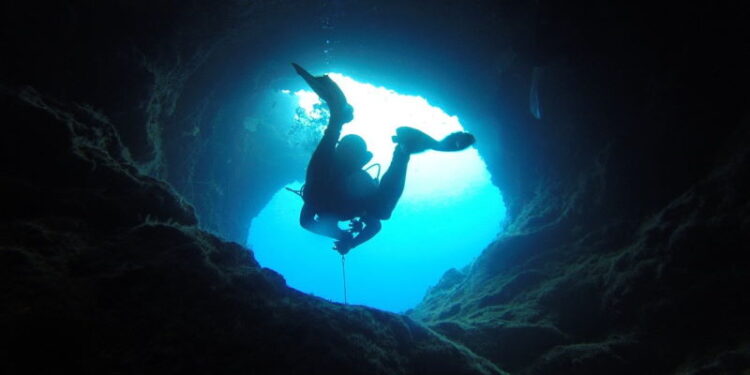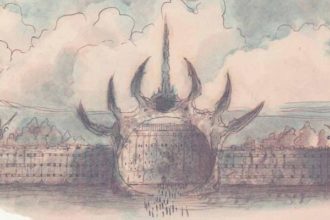Aquatic Traps

You see “aquatic” in one of my article titles, you know I’m working on stuff for Under the Seas of Vodari. Today, I’m thinking about how water, buoyancy, cold, darkness, and pressure might influence the construction of traps in dungeons. This might be a more direct window into my imagination and thought process than usual. I’m aiming for at least two standard traps and at least one complex trap.
Now, there are a lot of standard traps that still work fine. Magical traps – things already based on seeing a glyph, magically-sensed proximity, that kind of thing – don’t need to change underwater unless they’re exclusively based on fire for some reason.
Considerations
Here are some things that don’t make a lot of sense underwater.
- Pressure plates. Aquatic builders probably don’t assume anyone needs to walk They live in a 3d world of buoyancy, where walking is only even an option for a limited number of ancestries.
- Conversely, then, pressure plates are more likely to get used as keys or triggers for beneficial things, but only by people who can walk or would think to put weights in place.
- On their own, underwater pits are a completely useless idea to aquatic people.
- Inverting the idea of the pit into exploiting currents and suction, though… surface-dwellers can stand up to high winds a lot better than aquatic people can stand up to strong currents, I expect.
- Water is more harmful to metal, decade over decade, than air is. Spike traps, arrow traps, or things relying on metal mechanisms generally… well, they want some extra alchemical treatment or something. Also, tension stored in wood or bowstrings? Not great over the medium-to-long term. Aquatic people have been solving that problem since forever, though.
- Falling block traps can work, but water is much less compressible than air. The water has to have a place to go, which might just be some ways to fill the space evacuated by the falling block.
- This part is a lot more debatable, but – I wonder how practical tripwires are in general. For something like a container lid or a trapped door, they work fine. For an exposed tripwire in a hallway, I think it fails for the same reason as a pressure plate and is in more danger of a false positive trigger, from water currents or things drifting in the water.
The takeaway here is that trap triggers are in a dire situation (i.e., writing new ones is the best use of my time), while trap effects are a reasonably even split between “solvable problem” and “non-issue because magic.” As far as that goes, there’s nothing stopping you from using gravity magic to make pit traps full of spikes perfectly cromulent, except that pairing gravity magic with a damn pit trap is no one’s reasonable use of resources. (Also, ahem, Dunamancy is very much not OGL-compliant content!)
Temperature Triggers
Here we benefit from the advanced tech axiom of the Ancients. The idea behind the temperature trigger is that the temperature of the water is very cold and steady, until something warm-blooded is in the area. The trigger is a vial filled with a tiny amount of enchanted mercury or some other magitech, which activates the trap when it warms and expands. Of necessity, the trigger is exposed or very close to the surface of a wall; probably it sees most of its use in places an intruder would be for an extended time, such as immediately before a locked door.
Temperature Trigger. A creature other than a construct or undead that stays within 10 feet of the sensor for 1 minute triggers the trap. The trap also triggers if a spell or effect that deals fire damage occurs within 10 feet of the sensor.
Countermeasures. A successful DC 15 Wisdom (Perception) check detects the sensor or the thin panel concealing it. A successful DC 15 Dexterity (thieves’ tools) check disables the sensor. A spell or effect that deals cold damage targeting a space within 5 feet of the sensor deactivates the sensor for 1 round.
Turbine
Moving water pushes hard. Again tagging in the advanced tech of the Ancients and current tech-savvy undersea people, I’m imagining something close to a submarine turbine. I kind of want to use it as both trigger and effect. You could do a thing where a current pushing a turbine was the trigger, right? What I’m saying is, use this as a single thing, or break out the trigger and countermeasures, and attach a new effect.
Turbine Trigger. A creature that moves more than 5 feet per round within 20 feet of the turbine triggers the trap.
Effect. The turbine pushes water in a 10-foot-radius cylinder. A creature in that area that fails a DC 16 Strength saving throw is pushed 30 feet into spikes, taking 3d10 piercing damage. A creature that doesn’t have a swimming speed has disadvantage on this saving throw.
Reverse Effect. The turbine pulls water in a 30-foot cone. A creature of Large size or smaller in that area that fails a DC 16 Strength saving throw is pulled 20 feet toward the turbine. A creature that doesn’t have a swimming speed has disadvantage on this saving throw. If this brings the creature into contact with the turbine, it takes 6d10 slashing damage.
Countermeasures. The turbine trigger is visually obvious; a successful DC 18 Intelligence (Investigation) check reveals its function and which direction it will move the water when activated. A creature within 5 feet of the turbine can disable it with a DC 18 Dexterity (thieves’ tools) or Intelligence (thieves’ tools) check. A creature can anchor itself to a surface with rope or chain with a successful DC 18 (mason’s tools) check.
Idol of Wracking Transformation
Complex trap (level 5-15)
The goddess of monsters protects her temples with these massive statues of stone, bronze, and shell. The idol stands in the center of a wall 80 feet long, in a ritual chamber that is 60 feet wide and 30 feet high. Its features are grotesque, combining elements of natural beasts and horrific monsters of the sea. The ancient enchantments placed upon the idol transform intruders and compel them to fight their allies viciously.
Trigger. The idol activates when two humanoids come within 60 feet of it at the same time. A disturbing array of twenty-four eyes on the idol glow with an intense purple light, which diffuses through the water.
Initiative. The trap acts on initiative count 10 (level 5-10), or initiative count 10 and 20 (level 11-15).
Active Elements.
Agonizing Transformation. The idol’s many eyes flare, and the idol randomly selects half of the humanoids within 60 feet of it to roll a DC 13 Constitution saving throw. Creatures that fail this saving throw take 1d10 radiant damage and roll 1d6 on the table below.
1d6 – Effect
1-2 – The target’s arms magically transform into crab-like pincers. As a free action at the start of each of the target’s turns, it must make a melee attack with a +7 bonus against a creature within 5 feet. On a hit, the attack deals piercing damage equal to 1d8 + 5 (level 5-10) or 2d8 + 10 (level 11-15). The
3-4 – The target’s legs magically transform into large fish-fins. At the start of each of the target’s turns, if it isn’t adjacent to a humanoid, it uses it movement to get as close as possible to another humanoid.
5 – The target’s torso magically transforms into a hard bivalve shell. At the start of each of the target’s turns, the shell cracks and the target takes 2d10 force damage.
6 – The target’s head magically transforms into a jellyfish with stinging tentacles. The tentacles lash out at each humanoid within 10 feet that hasn’t been transformed by the idol; they must succeed a DC 15 Dexterity saving throw or take 3d10 poison damage and become poisoned until the beginning of their next turn. This effect repeats at the beginning of each of the target’s turns.
Dynamic Elements. The transformative magic intensifies the longer the trap remains active.
Surging Power. After its turn on initiative count 10, the idol’s power increases. The DC of Agonizing Transformation increases by 2, and the damage a target takes on a failed save increases by 1d10.
Constant Elements. The Poison Vents affect each creature that ends its turn within the area of this element.
Poison Vent. Small vents on the idol open and spew out jets of poison. Each creature within 5 feet of the statue rolls a DC 14 Constitution saving throw, taking 2d12 poison damage on a failure, or half damage on a success. A 5-foot cube that includes each creature that rolls this saving throw is lightly obscured.
Countermeasures. Each of the trap’s active elements can be thwarted by particular countermeasures.
Agonizing Transformation. All transformation effects on a target end and its body parts return to normal when its hit points fall to 0. A dispel magic, alter self, or polymorph spell can remove one transformation.
If the creatures collectively succeed one Intelligence (Arcana) check per humanoid within 60 feet of the idol, they drain power out of the idol for 1 minute. Surging Power ceases and all saving throws against Agonizing Transformation have advantage. The creature rolling the Intelligence (Arcana) check must be on the idol or within 5 feet of it to attempt the check.
If the characters collectively succeed one Intelligence (Religion) or Charisma (Deception) check per humanoid within 60 feet of the idol while it is drained of power, the goddess can be persuaded not to empower the statue again. The idol goes dormant for 24 hours. The creature rolling the Intelligence (Religion) or Charisma (Deception) check must be on the idol or within 5 feet of it to attempt the check.
The DC of these ability checks is 14 (levels 5-10) or 18 (levels 11-15).
The idol has 600 hit points and 18 AC. As an object, it is immune to poison and psychic damage and all conditions. Reducing it to 0 hit points disables it for 1 hour; at the end of the hour it re-forms as if new.
Design Notes
Complex traps are hard to write, y’all. I haven’t really sorted out the damage per round that it deals – that’s a later development step. The story of this idol is all about the goddess Dokahi, who is super important in Under the Seas of Vodari. We’ll see what the lorekeeper members of the creative team think about what I’ve done here.
My hope is that it feels like your bodies are getting turned against the team itself as you struggle, so that the single Active Element is enough. One of the specific tough things in a complex trap and in a boss fight is having enough layers of stuff going on and other considerations to make it interesting.



